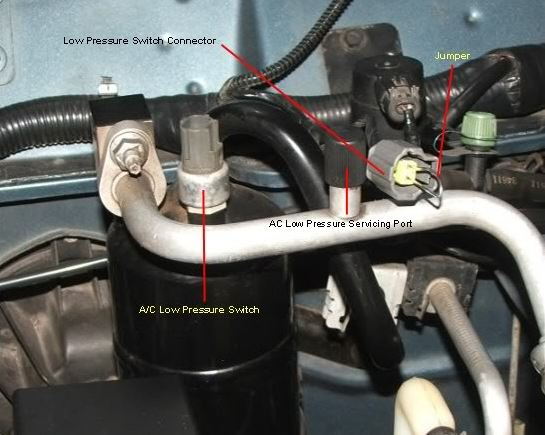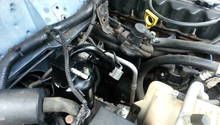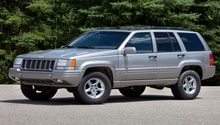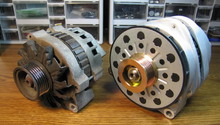Jeep Cherokee 1997-2001: Why is the A/C Not Working?
The air conditioning system in your Jeep Cherokee is quite advanced, but it doesn't have to be very complicated to find out what is wrong when it is malfunctioning.
This article applies to the Jeep Cherokee XJ (1997-2001).
Is your air conditioning (A/C) working properly? A working A/C in the Jeep Cherokee is a relief on a hot day. However, there are quite a lot of components in the A/C system that can break over the years. Continue reading to find out some easy diagnostics to find out what could be wrong with your malfunctioning A/C system. The problem could be simple and easy to fix or it can be hard, in which case it's recommended you take it to the dealership.

Materials Needed
- Paper clip
- Spare relay for the A/C clutch (borrow one)
Step 1 – Check fuse and relay
A very easy first step is to check if the fuse and the relay for the A/C compressor clutch are burnt. The pulley for the A/C compressor is spinning as soon as you start the engine. The compressor itself is, however, only engaged when you turn on the A/C. This is possible since there is a clutch inside the pulley for the A/C compressor. When the A/C is turned on, the clutch engages and locks the pulley to the compressor. This makes the compressor start working.
The exact location of the fuse and the relay varies depending on the year your car was manufactured, but you will find them in the fuse box of your car. The location of the fuse box also varies depending on what type of engine your car has and what year it was manufactured, but it is a black plastic box located under the hood somewhere. To find the correct fuse and relay in the fuse box, check the inside of the fuse box lid or in your car's manual.

Step 2 – Check A/C compressor clutch
If the A/C works when the engine is cold and not when the engine is warm, it could indicate that the A/C compressor clutch is worn.
The A/C compressor and the pulley can be located on different places around the serpentine belt. To find the A/C pulley, look for the slightly different pulley with a center that can be locked together with the outer pulley when the A/C clutch is engaged (see Figure 2).

With the engine running, check the pulley for the A/C compressor. When the A/C is turned off with the A/C control on the dash, the center of the A/C pulley should be sitting still. When the A/C is turned on, the A/C compressor clutch should engage, making the center of the A/C pulley and the A/C compressor revolve.
To make sure that the A/C compressor clutch works correctly, you'll have to perform the above test with both a cool engine and a warmed up engine. If the A/C compressor clutch is worn, the air gap in the pulley is too big when the engine is warm, which makes it impossible for the magnetic A/C clutch to engage. A quite simple solution to this could be to remove the A/C pulley and remove one shim, hence making the air gap smaller.
Step 3 – Check the refrigerant level
If the A/C compressor never works, it could be due to low refrigerant level, resulting from a refrigerant leak. When the refrigerant level is too low, the Low Pressure Switch stops the compressor from running. It is possible to test if the A/C compressor isn't engaged due to low refrigerant level, or if it is due to an electrical problem.
Remove the electrical connector from the Low Pressure Cycling Switch. The switch is located on top of the A/C Accumulator (see Figure 3). Insert a paper clip or a bit of steel wire into the socket to short circuit the connection (there is a clip in the socket in Figure 3). Turn on the A/C using the control on the dash and then start the engine. Check if the A/C compressor is running and then immediately turn the engine off.
If the A/C compressor was running when the engine was started, the refrigerant level is most probably low. Go to a specialist to test for leaks in the A/C system. If the A/C compressor was not running when you started the engine, there is an electrical problem with your A/C system that needs attendance.

Pro Tip
Don't let the engine run longer than necessary during this test. If your car is low on refrigerant, forcefully running the A/C compressor (as is done in this test) for too long could damage your compressor. The refrigerant not only works as a cooling fluid, but also as a lubricant of the compressor.
Related Discussions
- Compressor Not Engaging - CherokeeForum.com
- Compressor Cycling - CherokeeForum.com
- A/C Not Working - CherokeeForum.com
- Blower Fan Not Working - CherokeeForum.com
- A/C Suddenly Not Working - CherokeeForum.com
- A/C Does Not Work - CherokeeForum.com
- Defrost Only Floor - CherokeeForum.com
- O2 Sensor - CherokeeForum.com
- Camshaft Timing - CherokeeForum.com






